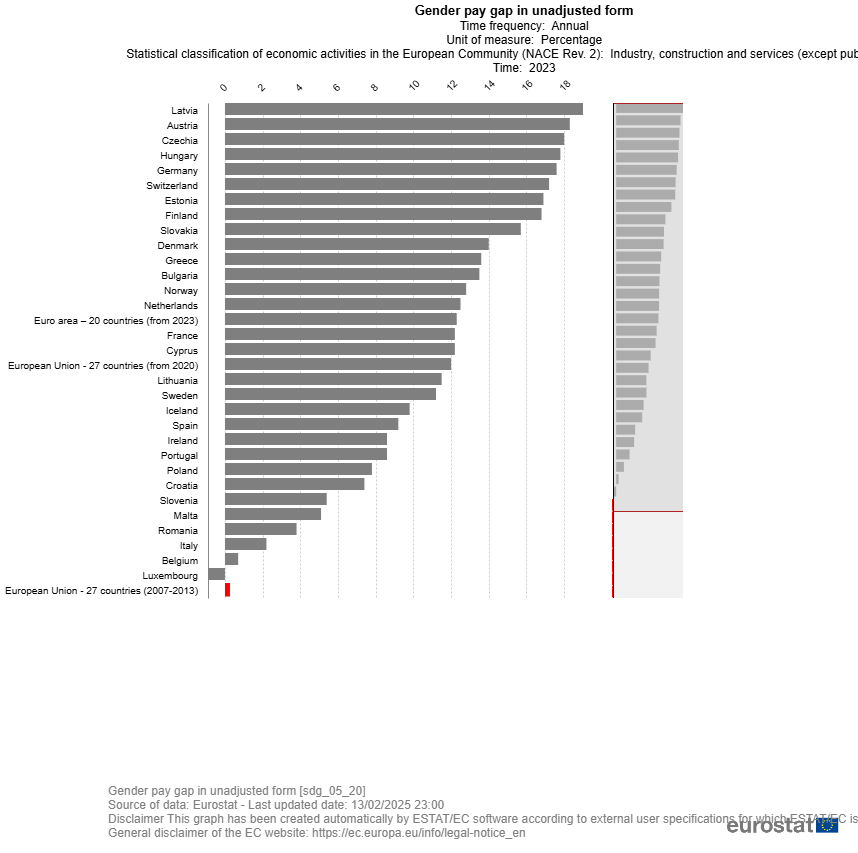What Is the Gender Pay Gap and Why Understanding This Phenomenon Is Key to Combating It

When discussing gender gaps, we refer to any disparity between men and women in terms of participation levels, access, remuneration, rights, benefits, and other related factors. These differences in opportunities, income, and status are, therefore, undesirable and unjust. Among the various disparities historically classified as gender gaps, the Gender Pay Gap stands out as a significant and persistent issue. This phenomenon is by no means a recent development; it dates back to earlier periods, such as the use of low-cost female labour during revolutions like the French and Industrial Revolutions. In these contexts, women frequently replaced men in the workforce, yet without being paid or protected to the same extent as their male counterparts.
The term Gender Pay Gap specifically concerns the gender wage gap, defined as the difference between the average gross hourly earnings of men and women. This figure is calculated on the wages paid to employees before deductions for income tax (assets owned) and social security contributions (e.g., pension, sickness, unemployment, disability, and maternity contributions). One widely recognised tool to measure and better understand gender disparities, particularly the Gender Pay Gap, is the Global Gender Gap Index, developed by the World Economic Forum. This index annually assesses both the current state and the evolution of gender equality across four main dimensions:
- Educational attainment;
- Health and survival;
- Economic participation and opportunity;
- Political empowerment.
A thorough contextual analysis of this index allows us to gain a clearer picture of the actual state of gender inequality. Although principles such as equal pay for equal work or work of equal value have long been acknowledged, as seen in Article 23 of the Treaty of Rome (1957), the gender pay gap has remained an enduring issue, with only marginal improvements achieved in recent years.

To fully understand wage disparities, it is essential to recognise that their causes are multifaceted. Factors include work experience, part-time versus full-time employment, level of education, and career interruptions. On a European scale, the average gender pay gap recorded in 2023 was approximately 12%, with notable variations between countries. Eurostat data from the same year also reveal that the gender pay gap tends to widen with age, is more pronounced in the private sector than in the public sector, and reflects the underrepresentation of women in managerial positions. Additionally, women perform more unpaid labour than men, such as housework and childcare, roles that are traditionally assigned to women. These forms of work, although legitimate labour, remain unpaid and often overlooked. The time invested in unpaid care work reduces the time women can dedicate to paid employment, a situation exacerbated by ineffective legislation and policies, such as parental leave schemes that are far more accessible to women than to men. This disparity reinforces gender stereotypes and hinders progress towards equality.
To complicate matters further, even if women in the European Union are attaining higher levels of education than men, they remain underrepresented in the labour market and earn lower wages (Ferri et al., 2023). This imbalance is deeply intertwined with socio-cultural mechanisms, such as the glass ceiling, which represents the invisible yet impenetrable barriers—rooted in stereotypes and gender roles—that prevent women from attaining leadership and executive positions despite their qualifications. This barrier is particularly significant for highly educated women. Vertical segregation, another relevant concept, describes the systemic obstacles that limit women’s advancement to top positions. Cultural norms also influence behaviour; for instance, research shows that women are less likely than men to negotiate or demand fair compensation (Jackson & Bussey, 2020).
In light of these reflections, what can we do? As a psychologist and an emerging researcher on the themes of inclusion and eco-social justice, I feel a social responsibility to take a stand and raise awareness about these systemic issues. It is crucial to shift from remedial interventions, which address inequalities only after they occur, to preventive measures that target the roots of inequality. Educating new generations—starting from early childhood—about societal dynamics and long-standing systemic inequities is essential to effect real change. Training programmes and initiatives aimed at dismantling gender stereotypes should be introduced early on, with the long-term goal of building a society that goes beyond current disparities, adopting a holistic and interconnected approach to understanding and transforming reality.
Challenging gender roles in everyday life and the workplace is vital, offering alternatives to entrenched cultural norms through awareness-raising initiatives and training programmes in schools, universities, and workplaces. Moreover, conversations about money and finance must become part of the public discourse. Governments and public institutions should offer accessible courses on financial literacy, led by experts, to empower individuals. Addressing long-standing taboos around income transparency is also crucial; earnings should not be a source of shame or secrecy but rather a topic of open dialogue, enabling individuals to understand systemic dynamics such as the Gender Pay Gap.
Policy reform is equally important. This includes a cultural shift driven by governments and international organisations, particularly regarding parental leave and care support services. Recognising and valuing care work as a fundamental component of every individual’s contribution to society—regardless of gender—is essential. Society must move away from viewing care work as a silent burden disproportionately carried by women, reframing it instead as a shared responsibility. Providing comprehensive parenting support, equal parental leave, and care services for children and the elderly would promote a sustainable balance between professional and personal life for all.
While the road ahead is undoubtedly long, meaningful change is possible. Collaboration and collective action are essential to transforming perspectives and creating a more inclusive and sustainable world. It is time to broaden our horizons beyond individual interests and work together, step by step, to create a fairer reality for future generations and for society as a whole.

